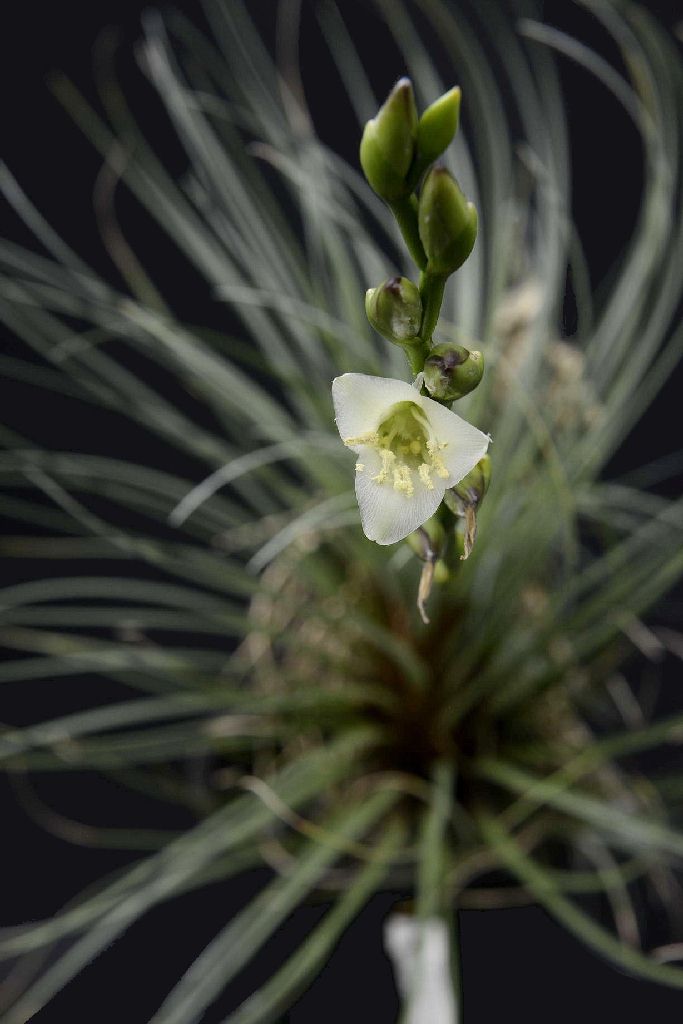
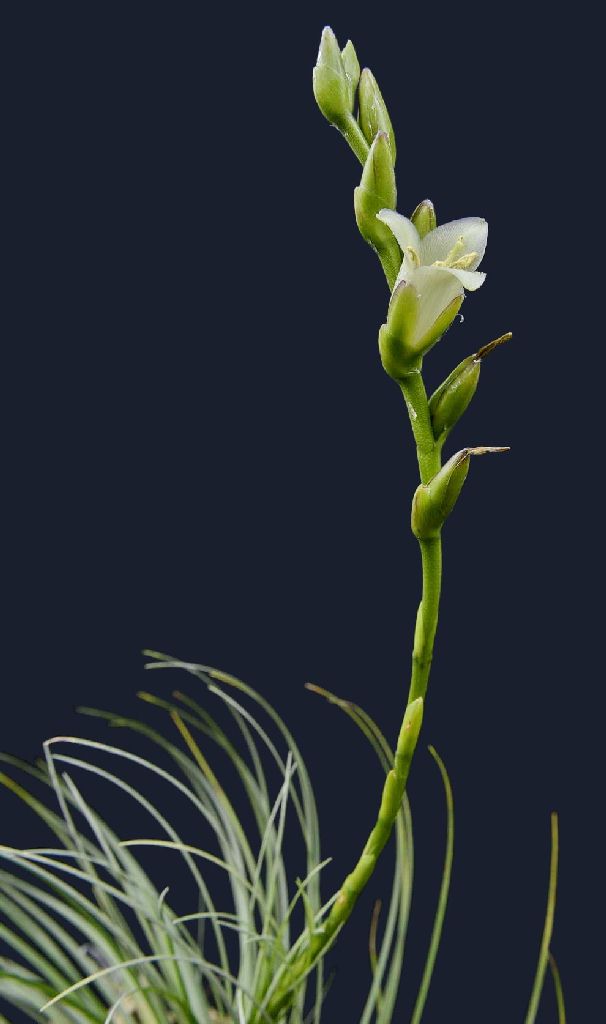
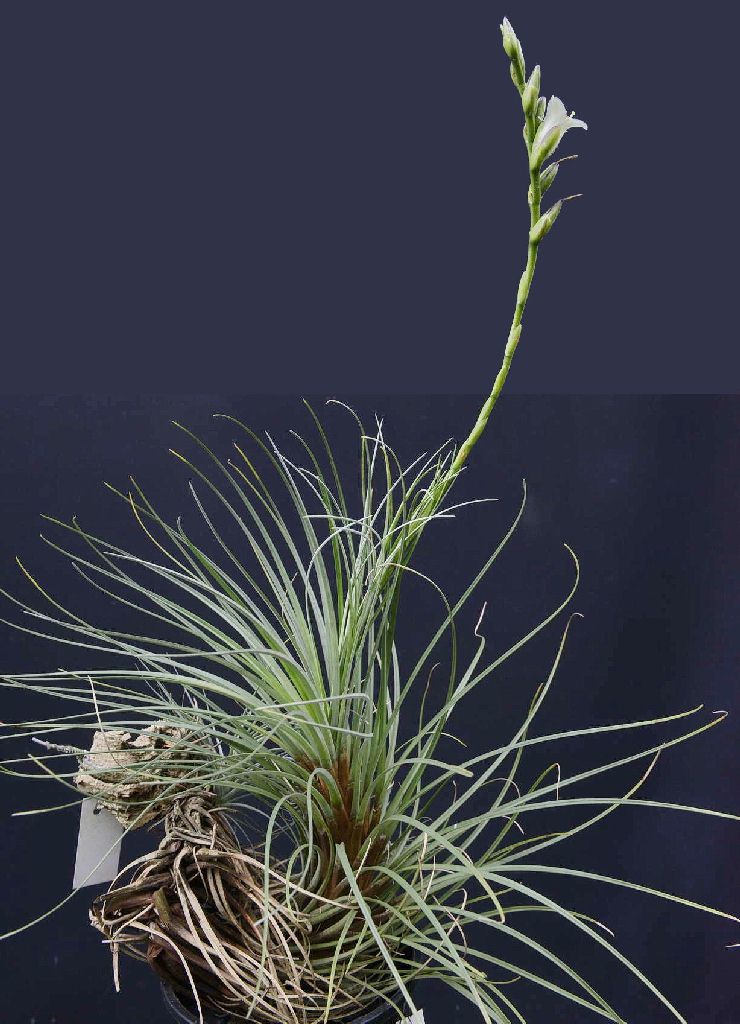
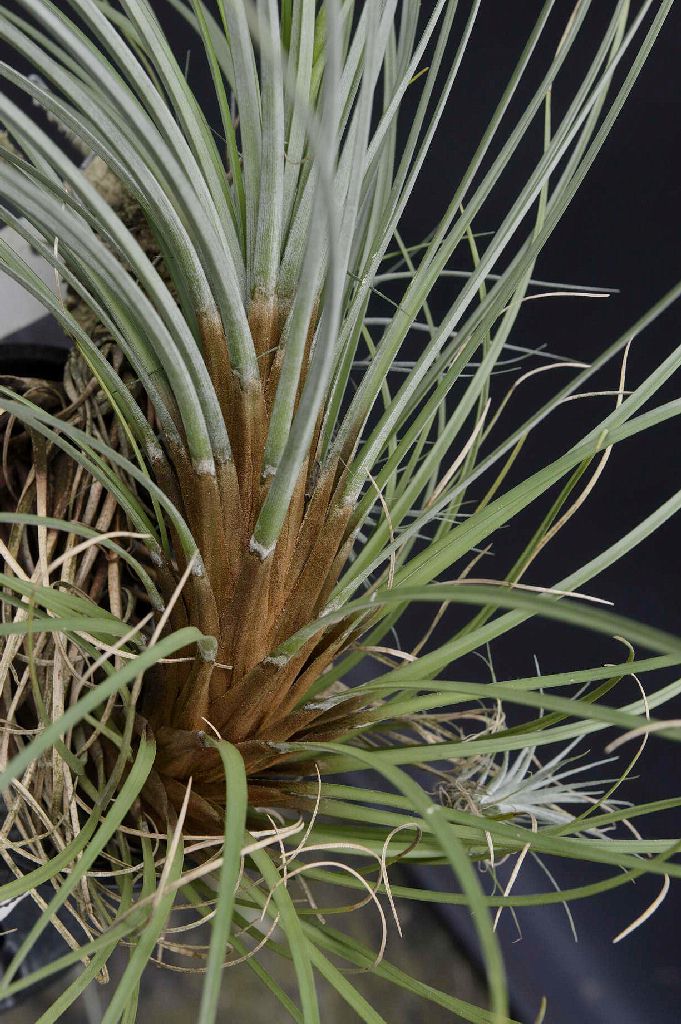
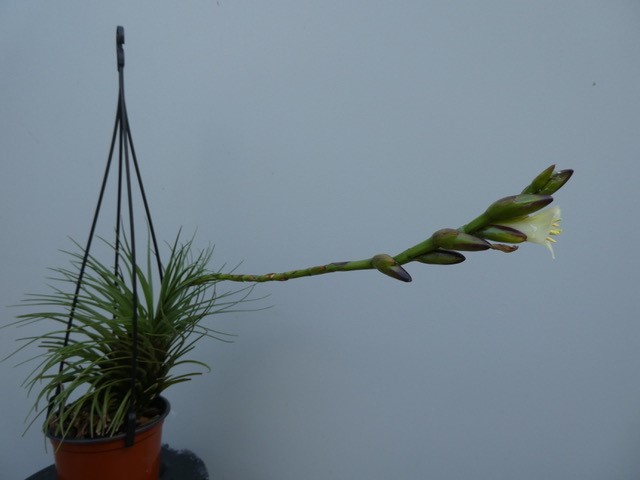
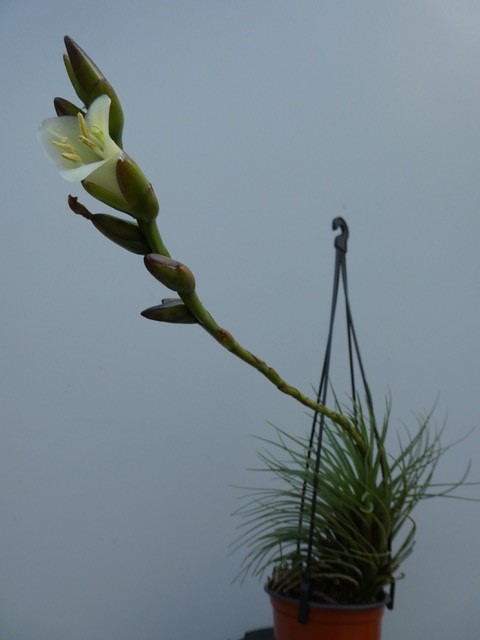
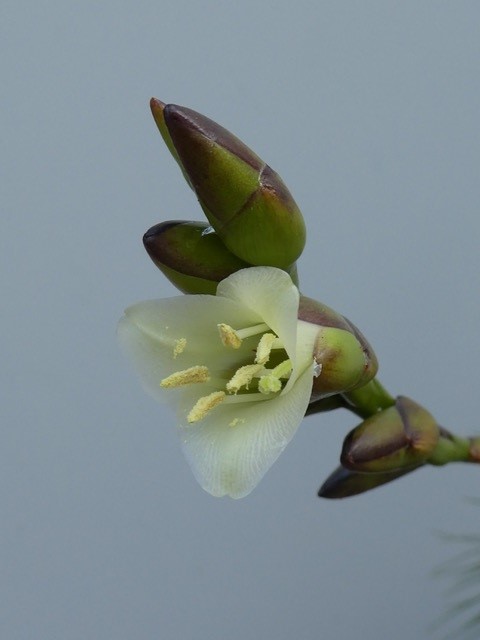
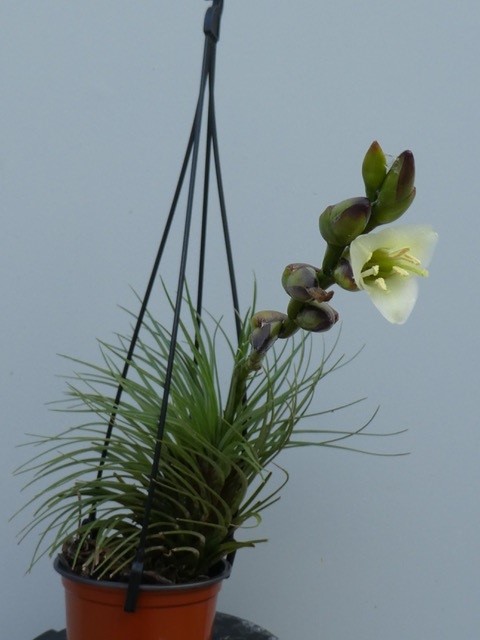
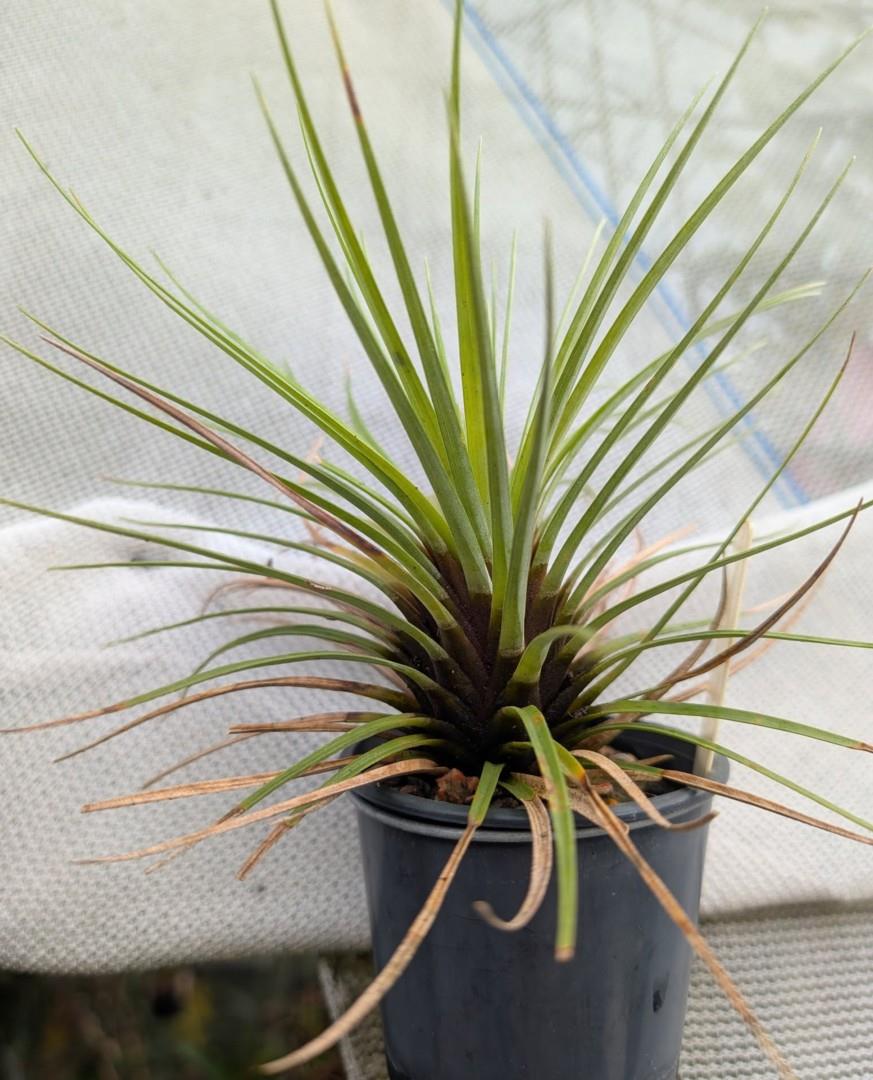
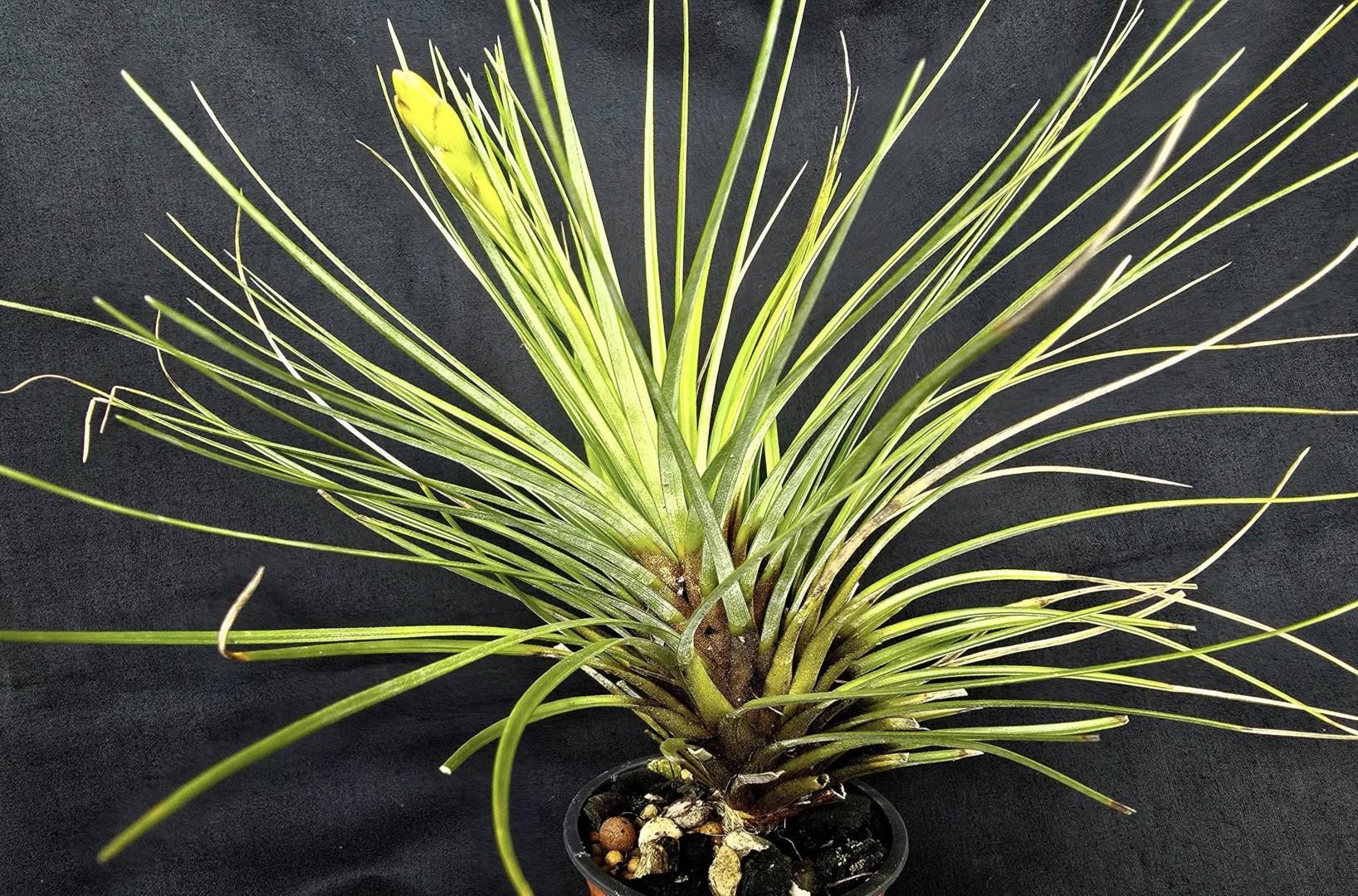
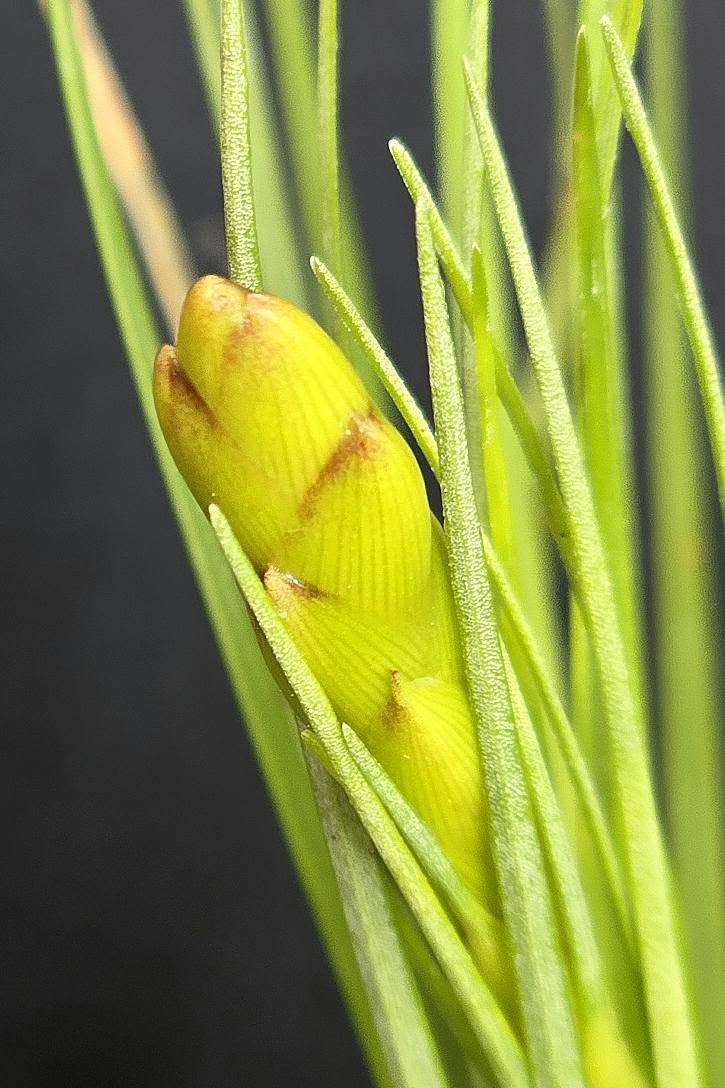
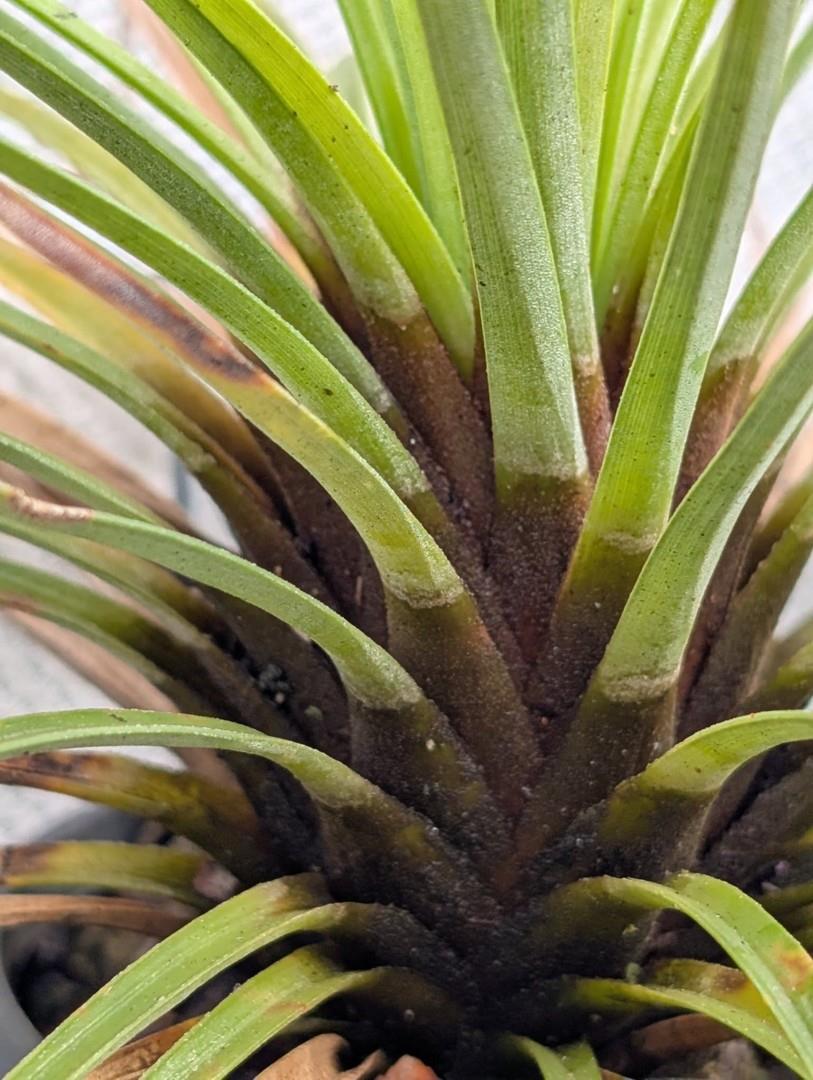
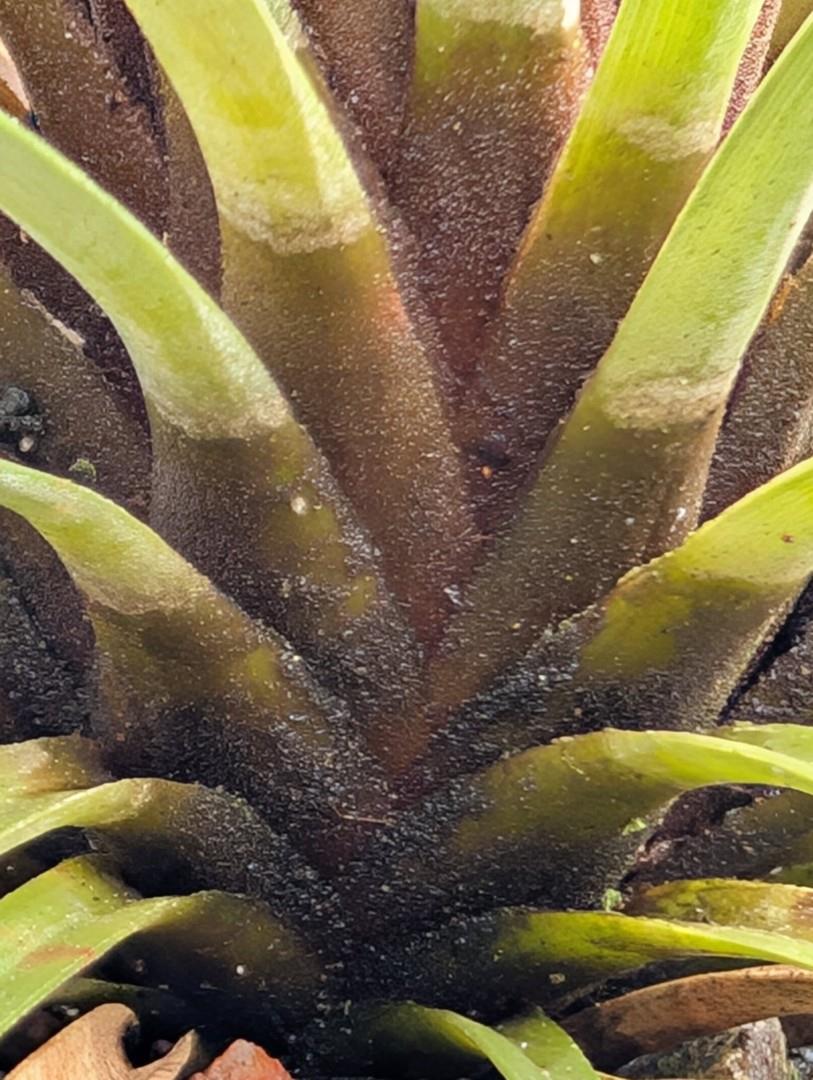
Vriesea plurifolia Leme Bradea 4:314. 1987
Plant saxicolous, flowering to 55cm high, caulescent
Leaves numerous, ca 26cm long, suberect, and incurved towards the tip, clustered, by no means forming an utriculum at the base,
Sheath long triangular, gradually narrowing towards the top, maximum height 18mm, margins involute, corrugated longitudinally, both sides clearly dark brown lepidote.
Blades narrow linear, 3-4mm wide, conspicuously channelled, tip filiform attenuate, green, towards the base on both sides clearly dark brown lepidote, towards the tip underneath white lepidote above glabrescent, edges truncate.
Scape erect, subrigid, ca 35cm long, 4mm diam, green, glabrous, shiny.
Scape bracts lower ones leaflike long ovate with filiform-subulate tip, inside glabrous, outside white lepidote, erect and exceeding the internodes, upper ones ca 17mm long, ca 12mm wide, broad ovate, tip rounded apiculate, green, inside subglabrous, outside glabrous, shorter than the internodes.
Inflorescence simple, 8cm long, 2-3cm wide, distichous at anthesis, erect, much exceeding the leaves,
Rhachis flexuous, green, glabrous, shiny, ca 3mm diam, very visible.
Floral bracts suborbicular, ca 14mm long, 18mm wide, not keeled, retuse tip, outside glabrous, inside inconspicuously white lepidote, green except for dark brown margins, shiny, equalling belove the middle of the sepal, smooth
Flowers nocturnal, erect, 35mm long, pedicellate, pedicels thick, ca 5mm long, and ca 6mm diam,
Sepals elliptic, 21mm long, 13mm wide, not keeled, retuse tip, both sides inconspicuous and sparse white lepidote, green except for dark brown margins, free, shiny,
Petals obovate, 28mm long, 16mm wide, retuse tip, free, yellowish, erect or sub spreading at anthesis, at the base 2 ligules 6mm long, with sub-entire tip with irrregular teeth.
Stamens included, Filaments tubular, free, Anthers 8mm long, linear, dorsifixed near the base.
Ovules short caudate.
Type Espirito Santo, Municipality de Serra, Plant rupicolous with nocturnal flowers. Leg. Luiz Correia de Araujo s.n. Flowered in cultivation October 1986 Holotype HB
Differs from V. parvifolia L B Smith in
Leaves fasciculate
Leaf sheaths very densely covered by scales
Leaf blades very narrowly linear, about 3-4mm wide
Flowers distinctly pedicellate
Petals free.